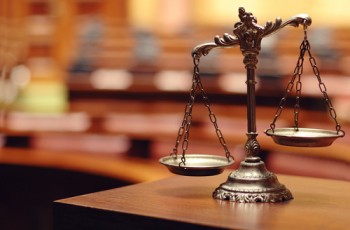Pricing Amy: Should Those Who Download Child Pornography Pay the Victims?

Illustration by Mark Smith
“Amy” was just 4 years old when her uncle first trained his sights on her. He gave her rides on his motorcycle and bought her treats, including her favorite, beef jerky—gaining her trust before he started doing the unspeakable.
It wasn’t until Amy was 7 or 8 years old, according to court records, that her parents discovered the terrible truth about the years of sexual abuse.
It started like so many other instances of child exploitation: Amy’s uncle showed her pornography and then began raping her on a regular basis.
Amy recalls telling him the penetration hurt, but it kept happening. And like most child victims, she trusted him when he told her it was a normal thing adults do with children, that he loved her and that it was their special secret, according to her victim impact statement. The uncle was eventually arrested and incarcerated. Amy grew into her teenage years and, with the help of therapy, seemed to be growing into a relatively happy, healthy, normal teenager, according to court documents. Then the other shoe dropped: Amy learned that her uncle had photographed the abuse and put the images online, creating a permanent record of her agonizing abuse.
It’s not exactly clear when Amy’s pictures began circulating online, but court records indicate the digital images date back to as early as 1998.
Amy, now in her early 20s, began sliding backward in her recovery. Court filings indicate that she suffers from depression, is withdrawn and anxious, and has a history of alcohol abuse. She’s been unable to succeed in college or work and is reluctant to socialize. While some experiences still trigger bad memories, she’s more concerned about being recognized in public by people who downloaded “her” images.
“Now I always know that there is another ‘little me’ being seen on the Internet by other abusers,” she wrote in her statement. “I don’t want to be there, but I am. I wish I could go back in time and stop my uncle from taking those pictures, but I can’t.”
Amy and her lawyer are, however, fighting back. Her battle is part of a series of cases—now wending their way through the federal courts—trying to help the victims of child pornography by seeking financial restitution, not from the perpetrator but from the untold number of people who subsequently download their pornographic images.
Amy could be considered the leader in this legal trend. Her pictures are among the most widely traded in the underground world of online child pornography.
Under the Crime Victims’ Rights Act, the government must notify Amy and other child pornography victims anytime anyone is arrested by federal authorities for possessing their images. Her attorney, James Marsh of New York City, says his office has received at least 1,500 required notices of federal prosecutions for possession of those images. “The day after we were retained in 2008, we had someone open up all these notices she received in the calendar years 2006 and 2007,” Marsh says. “It took two days just to open the envelopes.”
Using the restitution provisions of the Violence Against Women Act, Marsh has begun utilizing the courts to request financial restitution from those convicted of possessing images of Amy’s child sexual abuse.
The novel and controversial requests don’t seek to hold possessors responsible for the original exploitation of Amy. Rather, they seek restitution under VAWA, as authorized by the Crime Victims’ Rights Act, for harm done to Amy each time someone downloads her uncle’s pornographic images of her.
Click here to read the rest of “Pricing Amy” from the September issue of the ABA Journal.



